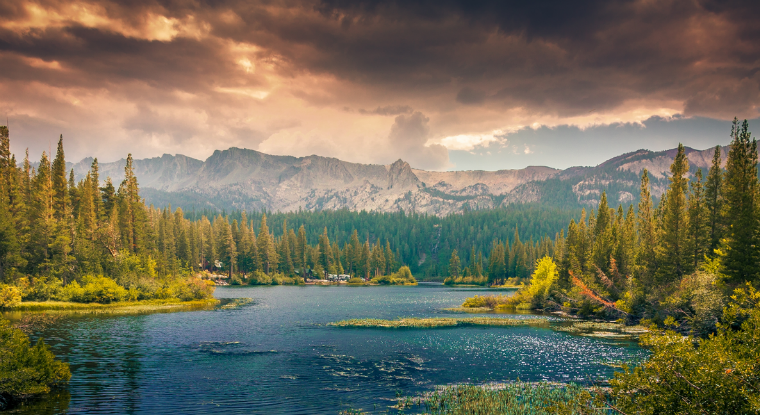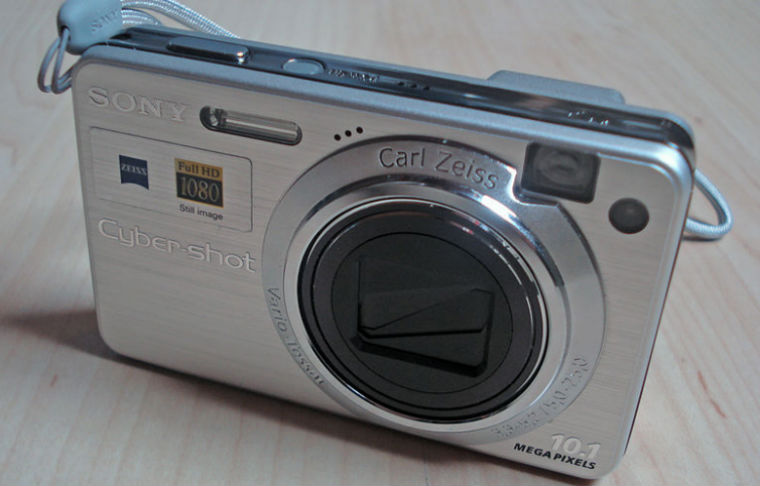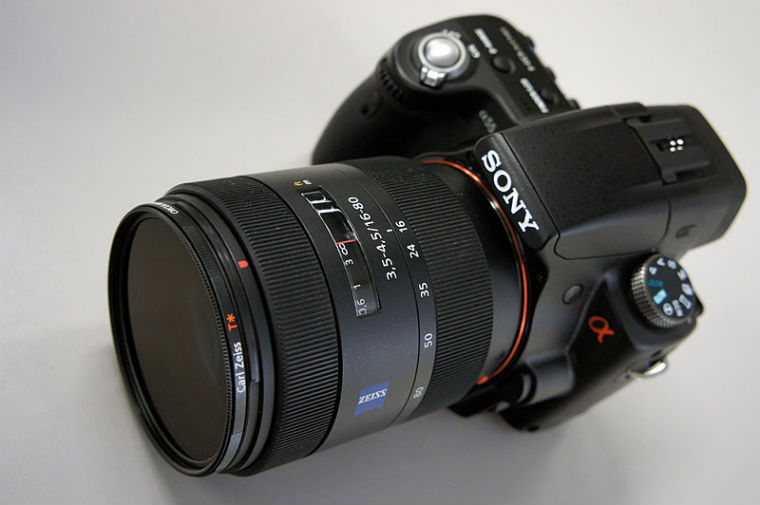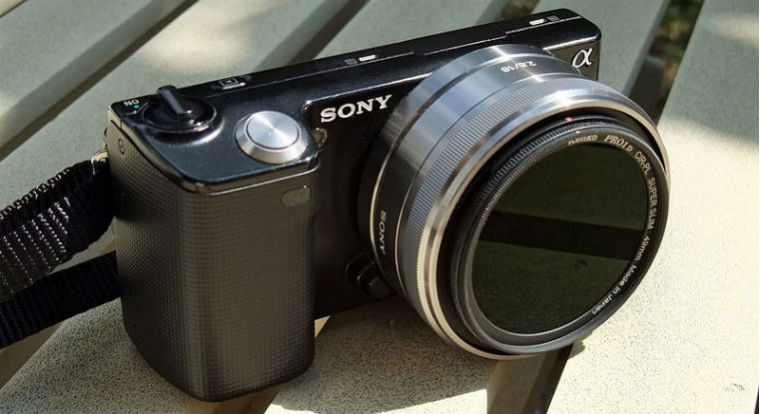These days every smartphone has a built in digital camera. So why should your small business spend cash on a real camera?
If you rely on a website or social media to promote your small business or its products (as you should), having a real camera will make all the difference in your photo quality. And better photo quality means a better company image. If it’s said a picture is worth a thousand words, why not save everyone some reading time and take advantage of this opportunity. Inspired by a post by Darren Rowse at the Digital Photograpy School, here’s how you choose the best digital camera for your small business.
1. Image quality

(Photo via Wolfgang Moritzer)
If the goal is high quality images, the two most important factors are the quality of the lens and the size of the sensor in your camera. Most modern sensors range in size from a fraction of an inch to the size of a 35mm piece of film — the bigger they are, the more expensive they are, but they also deliver better image quality.
The ability to have interchangeable lenses is important because it allows you to tailor the abilities of your camera for the type of photography you’re doing. While it’s beyond the scope of this post, lenses affect the final feel of your image in several important ways, including focal length and aperture. By switching lenses, it’s possible take great food photos and headshots with the same camera.
1. Categories of camera
There are three basic types of digital cameras: compact cameras, MILC (mirrorless interchangeable-lens) cameras and DSLRs (Digital Single Lens Reflex).

(Photo via wikimedia commons)
Compact cameras (or “point and shoot”): These inexpensive digital cameras may appear tempting: they are less expensive than the other options and some even seem packed with zoom lenses, but don’t be fooled — the sensors in these cameras are often no bigger than the ones in your smartphone. In fact, I’d go so far as to say there is no reason to buy a compact camera any more, as the camera in most modern phones can do just as well. Save the money for something else.

(Photo via wikimedia commons)
DSLRs: These are for serious photography needs. These cameras will offer a much more versatile array of settings and as a result can deliver more impressive results. Be warned though, DSLRs are more complicated and expensive, and you should expect to spend some time learning to get the most out of them. Most of these cameras have what’s called an APS-C sensor, which is about 1.5x smaller than a 35mm piece of film. If you’re looking for the best image quality, you’ll want a camera that has a “full frame” sensor, which is as large as 35mm.

(Photo via wikimedia commons)
MILC: This is a relatively new type of camera that offers many of the benefits of DSLRs in a smaller, usually less-expensive package. Cameras of this type allow you to change the lens, but typically rely on an electronic viewfinder or LCD instead of a traditional optical viewfinder like you’d get with DSLR. The great majority of these cameras come with an APS-C sensor.
So which do we recommend? For all but the most serious photography needs, the new MILC cameras will do a fantastic job, and will be lighter and easier on the wallet than a DSLR.
3. Interchangeable lenses
A camera is only as good as the lens attached to it. Though any digital camera will allow you to zoom in and out only DSLRs and MILCs will allow you to change the lens. This will be essential to a small business that depends a great deal on photography. The two main numbers you want to be concerned with when shopping for lenses are focal length and aperture:
- Focal length: This determines how “long” or how “zoomed in” the lens is, and is measured in millimeters. For example, a wide-angle lens that you’d use to take a landscape picture would be around 24mm, and a lens you’d take on safari to get pictures of lions from far away would be around 800mm. Most “standard lenses” that you’d use on an everyday basis fall in the range of 35-85mm.
- Aperture: This determines how wide the lens opens to allow light to reach the sensor. The size of the aperture has several useful qualities, including helping to determine the depth-of-field and letting you take pictures in low light. It’s measured in f-stops, and can be confusing at first; a f/2.0 lens opens wider than a f/2.8 lens. The lower the number the bigger the opening. Generally speaking, the lower number the better.
Focal length and aperture have many interesting properties that we’ve just barely touched on here, so please do your research on these before you go spending hundreds of dollars on lenses. They’re expensive for good reason, and if you pick the right ones they’ll help your images greatly.
4. Memory
Though we recommend always transferring your photos to a hard drive immediately after taking them, the amount of memory your digital camera will need will depend on a number of factors such as number of megapixels your camera has, file format and how long and what sort of projects you need it for.
Older cameras run on fewer megapixels and as a result they can hold 100 to 200 pictures with 500 megabytes of memory. However, as your camera becomes more powerful, especially with DSLRs, there’s a good chance 500 megabytes of memory will only hold about 20 of your pictures. But if your projects take you out of reach of a computer for more than a couple of hours (as they often will) we recommend you purchase a larger memory card; you can easily get a 16 gigabyte one for $20 these days.
5. The Extras
Keep in mind that the price of your digital camera probably won’t be the final total cost you spend on owning one. There are a variety of camera components and extras you might want to or need to go with your digital camera. These extras may include but are not limited too:
- Camera Case
- Memory Cards
- Spare Batteries/Recharger
- Lenses (if you are getting a DSLR)
- Filters (and other lens attachments)
- Tripods/Monopods
- External Flashes
- Reflectors
6. Read online reviews
Whatever you do, don’t attempt to purchase a digital camera without first doing research. Read online reviews like imaging-resource.com and dpreview.com. These sites will offer you a free resource where you can get the opinion of experts and customers alike so that you can arm yourself with knowledge before you walk into a department store and get heckled by an over-optimistic salesperson who might want you to buy the latest and most expensive product though he actually knows nothing about digital cameras.
7. Try before you buy
After narrowing down your options go to a local camera shop (big box department stores tend to have a much more limited selection) and test some cameras. This is where you will want the assistance of a sales clerk to demo the camera to show how its supposed to be used. No matter how nice a camera is you will want hands on experience to determine which one you see your small business using.
If you can, try not to buy from a big-box store though. Typically they’ll try to sell you on expensive accessories you don’t need. If you’ve got a local camera store, shop there — if not, there are several reputable online photography equipment stores like B&H and Adorama.
8. The best camera you’ll ever have
While a great camera can provide you with the versatility and power to capture great photography, but it will be of little help when you leave it back at the office because you don’t want to lug it around. It’s that dilemma that inspired whomever the first photographer who provided all photographers with the answer we all provide when asked, “What is the best camera?”
“That’s easy,” we respond. “The best camera is the one you have with you when a great photograph appears in front of you.” Bottomline: Have a camera with you at all times. And the better it is, the better your photo will be. But any photo will be better than none.
